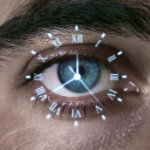About Epiretinal Membranes

Vision loss from an epiretinal membrane can vary from no loss to severe loss. People with an epiretinal membrane may notice their vision is blurry or mildly distorted, and straight lines can appear wavy. Some may have difficulty in seeing fine detail and reading small print. Others may have a gray area in the center of their vision, or perhaps even a blind spot. Over the past 5 years new advances in technology has provided ways in removing epiretinal membranes with excellent results. Dr. David Rabady, a Vitreo -Retinal surgeon at Ophthalmic Consultants of the Capital Region, has trained exclusively using these new technologies and techniques.
If you are experiencing floaters (also treatable), blind spots or notice that fine print is difficult to read– it is important to see an ophthalmologist immediately. Please call us to schedule an appointment at 518-274-3123.

